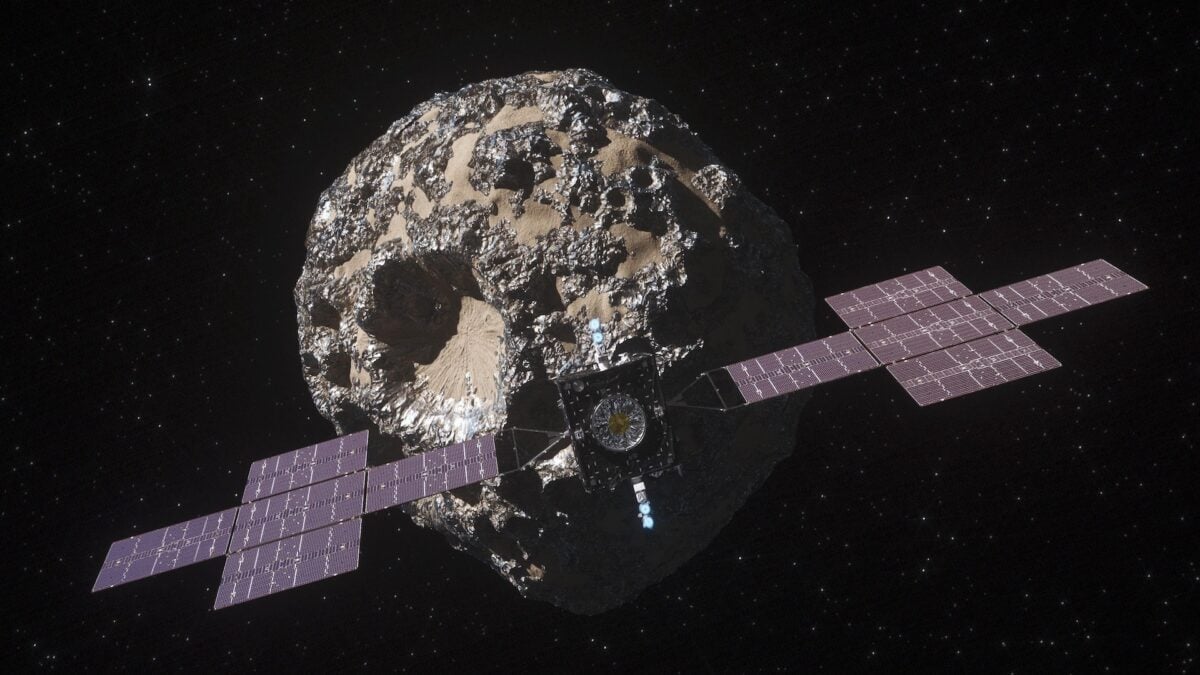Scientists at the European Space Agency used a laser to communicate with a spacecraft 165 million miles (265 million kilometers) away in deep space for the first time, marking a major step forward in their efforts to build optical communication systems for future missions to the Moon and beyond.
Scientists at the Kryoneri Observatory near Athens, Greece, shot a powerful laser at NASA’s Psyche mission, which then sent a return signal to the Helmos Observatory, which lies some 23 miles (37 km) away from the signal’s origin.
“This is an amazing success. Through years of technological advancements, international standardisation efforts and adoption of innovative engineering solutions we have set a cornerstone of the Solar System Internet,” Mariella Spada, ESA’s head of Ground systems Engineering and Innovation, said in a statement.
To pull it off, mission control at NASA’s Jet Propulsion Laboratory used powerful navigation tools including the the Delta-Differential One-Way Ranging—a kind of interplanetary radio tracking—to provide the ESA with Psyche’s exact position. Flight dynamics experts at the agency then designed the test while accounting for variables like air density, temperature, and the Earth’s motion. Sections of Greece’s airspace were also temporarily closed, just to be safe.
“Enabling this two-way optical handshake meant overcoming two major technical challenges: developing a laser powerful enough to hit a distant spacecraft with pinpoint accuracy; and building a receiver sensitive enough to detect the faintest return signal, sometimes just a few photons, after a journey of hundreds of millions of kilometres,” Sinda Mejri, project manager of the ESA’s Ground Laser Receiver system, said.
The signal relay is the first of four planned exchanges this summer as part of NASA’s Deep Space Optical Communications experiment aboard Psyche.
On a mission to investigate a metal-rich asteroid beyond Mars, Psyche also carries the DSOC, a gold-capped laser transceiver designed to test long-distance communication systems for future space missions. In December 2023 for example, DSOC managed to beam a video of an orange tabby cat named Taters chasing a laser pointer some 19 million miles (31 million km) back to Earth—a technological feat of the highest order.
Psyche itself uses radio to talk to its handlers on Earth, but laser communication systems could significantly speed up the conversation.
While this test didn’t involve sending any information to Psyche, optical communication systems can pack data into the oscillations of light waves in lasers, encoding messages into an optical signal that is carried to a receiver via infrared. These invisible beams—to our eyes at least—travel at the speed of light, carrying high-definition information from one point to another. This method enables data transmission rates some 10 to 100 times greater than the radio frequency systems used by spacecraft today, according to the agency.
“Combining this technology with the ones we have for radio frequency communications is essential to transmit the ever-increasing data output of the missions exploring the universe,” Andrea Di Mira, project manager of ESA’s Ground Laser Transmitter system, said.
The entire process requires extreme precision: Laser beams are much narrower than radio signals, which means that that the DCOS’s laser reply needs to be aimed in such a way that it takes into account Earth’s orbit to determine where the ground-based receiver will be by the time the signal reaches it.
The experiment’s success marks “truly a leap step towards bringing terrestrial internet like high-speed connectivity to our deep-space spacecraft,” Rolf Densing, the agency’s director of operations, said.
